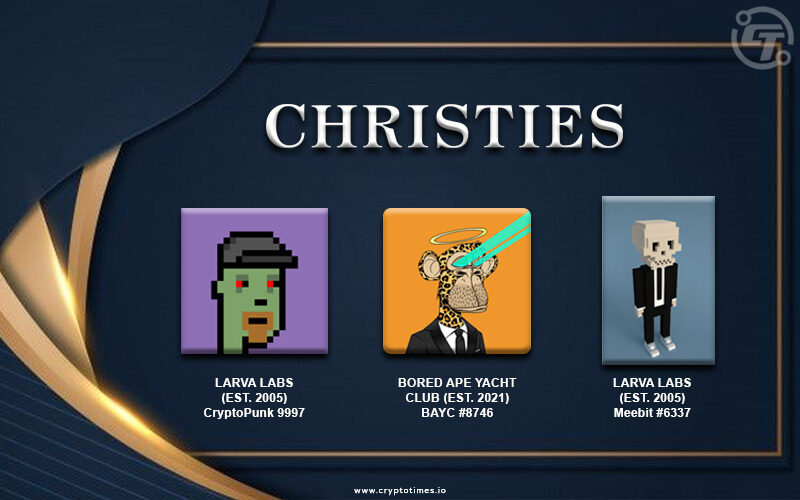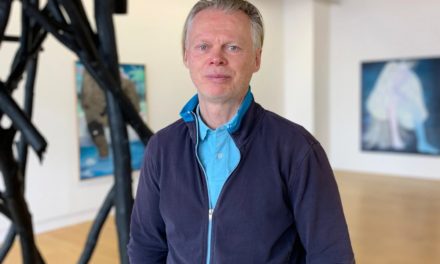In June, 2022, Christie’s Auction House held a virtual and in-person panel on NFT’s and art, explaining how NFT’s, crypto, blockchain, and art were all working together to create a more sustainable and more globally democratic future. Although this article is long, I encourage you to read it until the end. It will summarize how cryptocurrency can help reduce the marginalization of low-income urban communities, by helping to end the drug war.
NFT’s are a digital moment in time that is caught and then sold whether it be a snippet of sound, a video at a certain angle, a picture, and other things, including holograms (the 3D Tupac on stage was the first major hologram publicly seen). You are able to use them once you own them by acquiring them with your cryptocurrency “digital wallet”, which is a collection of random code words and numbers the computer gives you. You can create a wallet with many apps, including the app MetaMask. You MUST save the wallet code somewhere secure (like on a piece of paper in a safe), it will be your password to the NFT.

The following were points made at the Christie’s panel about NFT’s, blockchain, and cryptocurrency:
LAGO, owned by Scott Gralnick, is a company that owns frames that hold NFT’s in them. They are special in that they hold the company’s insignia and will only let you display an NFT that you own so, if someone familiar with the NFT world were to walk into your house and see that frame, they would know that the NFT was owned by you.
The Fabricant, owned by Amber Jae Slooten, is a digital fashion company that believes in making their digital fashion lines accessible to all people. If you create a digital fashion line and reach out to them, there is a good possibility they will sell your digital fashion on their website. Digital fashion is currently excellent to use for avatars – recently, Blake Lively went viral for using digital fashion, that was unfortunately not perfect, to put sandals on her feet for a photo. Although people thought she had photoshopped the sandals, she actually was using digital fashion, a very new and emerging industry to put clothing on her pictures that wasn’t originally there. This is one use of digital fashion that will be helpful in the future when digital fashion is much more realistic.
Auroboros, co-founded by Alissa Aulbekova and Paula Sello, is a fashion digital try-on company. It partners with brands to let you digitally try on clothing. In the future when this is finessed, this will be a HUGE factor in making the clothing industry sustainable. The clothing industry is one of the world’s biggest pollutants and a significant amount of the pollution is caused by the waste of returned clothing. If people could realistically see what clothing looked like that they were buying online before it was bought, there would be significantly less returning of clothing and shoes in the industries. It would substantially reduce the environmental waste caused by the clothing industry as well as cause a micro-boost for the economy, ensuring people did not buy items they will never wear and possibly not return. Auroboros is now partnering with Grimes, Tesla founder Elon Musk’s partner, for their latest vault.
OneOf, owned by Lin Dai, is a company that makes music and video NFT’s, offering fans of a musician NFT video clips of them performing in concert.
Ioconic, owned by Jamie Lewis, is a company that helps brands create NFT’s for their company. One example of NFT’s that have been created for companies are digital horse racing – this creates a whole new world for people who are keen on sports betting and it also proposes a potentially humane alternative to horse and greyhound racing. Because of a computer code that randomizes its outcome, these NFT’s are made on the blockchain which permanently imprints them so you can’t alter the code, it ensures that no one can fix or predict the outcome of the race.

A panelist whose name I did not catch, who was passionate about how blockchain is creating sustainability and democracy, spoke about how the US will make a digital dollar soon which will “end the Cold War” between the US and China, and called NFT’s the “democratization of fashion”. It is extremely interesting in 2023, with the war in Ukraine, to consider that digital currency is one possible way that authoritarian superpowers can be brought down. By encouraging the US to legally integrate digital currency, we are opening the doors to global democracy – this is ESPECIALLY the case because blockchain is decentralized, meaning that no one person can control it, and, if something is put on the blockchain, it can’t be altered. It not only prevents authoritarian rule over global currency, it also prevents currency from being manipulated by authoritarian figures.
Martin Wainstein was a panelist who said that there are seven points needed for global sustainability. The seven points were:
- Introduce climate disclosure language on the NFT platform, so that users and visitors can clearly understand where and why NFTs can have a significant energy and carbon footprint.
- If the NFT platform generates a transaction in a PoW-blockchain for every piece in an open edition, migrate to a smart contract that can generate only one transaction for the entire edition.
- Postpone – if possible – open editions until the new smart contract is in place. Alternatively, offset emissions until this takes effect.
- Leverage industry influence to advocate for PoW blockchains, to transition quickly into Proof-of-Stake or alternative low-carbon consensus protocols. Alternatively, switch to NFT minting platforms that already offer high quality smart contracts and tokens with lower-carbon consensus.
- Provide verified carbon offsetting services as part of the platform, to encourage users to compensate for unavoidable impact that minting and transactions have – highlighting that while these support important sustainability initiatives, offsetting is not the ultimate long term solution to the NFT climate issue.
- Initiate corporate carbon footprinting measures and tools for the platform and parent companies, along with commitments to achieving net-zero corporate emissions under industry standards such as The Climate Pledge and Science-Based Targets, in line with the Paris Agreement
- Issue an open climate announcement or press statement about the adopted steps and science based verified climate commitments, to encourage other platforms to follow suit and to respond to a concerned user community.
Tezos, owned by Kathleen Breitman, is a company that makes blockchain, NFT’s, and crypto better for the environment. Although in concept blockchain can create global sustainability, at the same time it currently is hugely detrimental to the environment because it requires a huge amount of electricity to be mined.
Incidentally, the organization Change the Code Campaign just recently announced that they have created a code that reduces the electric usage needed to make bitcoin by 99.99% – this is a huge starting step in making all forms of blockchain, cryptocurrency, NFT’s, and others that are environmentally friendly.
Serto, owned by Evin McMullen, is a company that helps people create digital signatures which can’t be altered, if you own the digital wallet for the signature, essentially ensuring that, if you keep your wallet private, no one can ever fake your signature on a digital document.
ProtoHologram, owned by David Nussbaum, is a company that creates digital holograms for companies that can be projected into huge spaces as 3D images. This is a new way that a person can potentially own a 3D object, potentially a large one, that is actually an NFT hologram when NFT holograms are made.
Candy Digital, owned by Scott Lawin, is a company that helps sports teams offer fans digital rewards (such as an NFTs, like the future holograms of, for example, NFL rings), for being a mega fan.
SuperPlastic, owned by Paul Budnitz, is an animation and visual effects company that sells their animations/graphics to clients. This means that they pre-create graphics like digital characters that ambitious people who want to create video games and animated film and shows can buy in order to use them for their digital product. Because SuperPlastic not only creates the graphics but can animate them, it makes the ability to create animated shows and video games more mainstream, which is another way that digital ownership continues to democratize large industries.
Mythical Games, owned by John Linden, is a next-generation game technology studio creating universal economies driven by player ownership of NFTs with utility. This is another example of how NFT’s can be used to end global poverty.
CryptoPunk, Decentraland and CryptoGigs are digital “metaverses”, aka a “digital universe”, where you can do things like buy digital land, go to digital mixers, and buy digital clothing.
OpenSea, owned by Alex Atallah, is the company and website which the majority of NFT buyers and sellers use to buy/sell their NFT’s. NFT’s can only be bought and sold with cryptocurrency – in OpenSea’s case, Ethereum. This requires you to first set up a digital wallet with an app (I recommended the app MetaMask above). You then link your digital wallet to your OpenSea account – Google breaks down how to do this – and then you buy Ethereum with your digital wallet.
It is worth mentioning that you are required to provide apps an ID with your address to buy (and sell) cryptocurrency, because it is not yet legal to do so for residents of solely New York. Fortunately, if you have a second address that is not based in New York, you simply need to provide the ID for that address. There is nothing illegal about purchasing and selling cryptocurrency through your non-NY residency. You are purchasing crypto as a resident of whatever other address you have.
NFT’s are very new, and, just like with things like vegan leather, they require the great endorsement of the public for them to become mainstream and be able to tap into their power to create a brighter future. Mushroom leather is an excellent example of this – although mushroom leather is humane to animals, it leaves a large carbon footprint, but because consumers showed enthusiasm for vegan leather, other forms of vegan leather that do not have as negative of a carbon footprint are being made. Similarly, blockchain, while currently detrimental to the environment, has the potential in the long-run – especially now – to not only have an extremely positive impact on the environment, but also to help begin a global democracy which is just starting to peek out of its shell,l now that the world is becoming increasingly angry with authoritarianism.

The most important way that we can contribute to this movement is to educate people about what exactly blockchain, cryptocurrency and NFT’s are, why they can make a positive impact, and how one can begin using them. One of the simplest ways we can begin this process is to question whether cryptocurrency should be legal in New York and to ask our legislators to weigh the pro’s and con’s more carefully. There are certainly some reasons that cryptocurrency can encourage criminal activity like drug trades, but this leads to a different question which promptly follows the first question, of if the drug war should continue, or if it only harms low-income urban communities, causing increased marginalization. Although this is not directly related to the article, those reading this article who would like to further investigate into this should read the book “The New Jim Crowe”.
The fact is this, computers are going to make the world a better place, if we let them. Part of this is giving everyone informational control – all people should know how to buy and sell cryptocurrency and NFT’s and all people should be able to. Everyone should know the basics of what blockchain is and be ready to educate the world with definitions for all these terms. We should be aware of how companies are using these new ideas. And we should be making sure that our legislators are aware that we want them not to discourage their use, because we understand how blocking access to cryptocurrency is continuing a drug war that causes low-income urban communities to be disproportionately locked up. It causes a disproportionate amount of poverty, in a repeating cycle that is disproportionately passed on to the next generations.
It is not easy to convince a government to end their war on drugs – we are all aware of that. But it is easier to convince a government to legalize cryptocurrency, which helps contribute to ending the war on drugs and helps end disproportionate poverty in some of the urban areas. It is far easier to educate the world on how to tap into digital art and currency, in a way that can ultimately create a global and sustainable democracy.
Edited by Wynter Aiken











